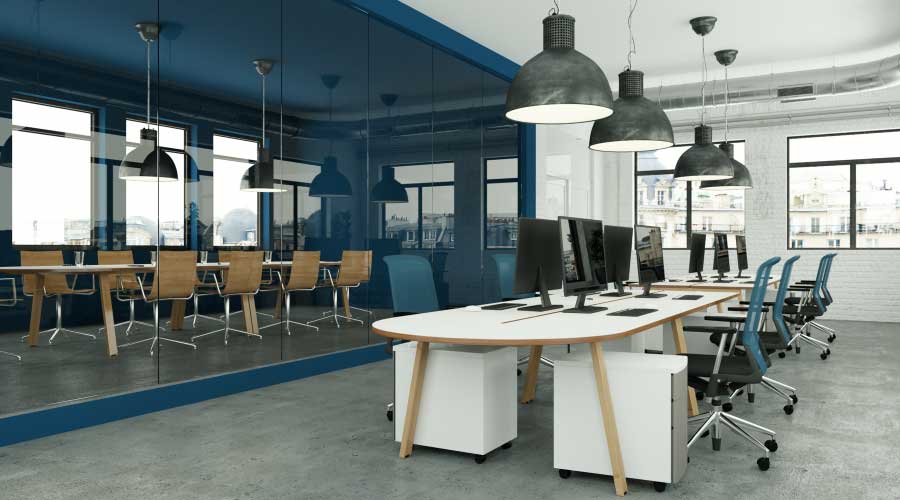Careless Swap Outs, Uniformity Can Damage Lighting Design
A few easy ways to damage the lighting quality of a space are to do a careless swap of lamps and to create too much uniformity.
In some cases, like a recessed can, swapping one lamp for another is probably more or less going to be OK, as long as the new lamp itself isn’t cheaply produced with poor performance characteristics. But taking a troffer and just swapping out the lamps can be more problematic. A better strategy is replacing the entire fixture, says Clanton.
“We call it luminaire replacement,” she says. “And it can be a one-for-one replacement, but if you do that you should improve the quality of the space.” In other words, if a facility manager is going to go all the way to replacing a fixture, taking the next half step to considering the impact of the luminaire and the lighting system design on the quality of the light only makes sense. Many offices were designed for paper tasks and CRT screens instead of flat-screen devices. This is true even in offices that might have been redesigned in the ’90s, says Loeffler. A one-for-one luminaire replacement in the absence of thinking about the lighting quality might save energy but it would miss the opportunity to really make a positive impact on a space that would address the way people work today.
Variability in Lighting
If glare is one cardinal sin when it comes to lighting quality, another would surely be uniformity. “Everything is bathed in an equal luminous environment, and it’s almost like navigating through luminous milk once in a while,” says Kozminski. This again comes from putting all of the lighting elements in the ceiling, but it’s also a legacy of the previous limitations of the lighting technology that was available.
Uniformity in lighting makes wayfinding more difficult, is fatiguing to the eye, and disrupts the body’s circadian rhythms. Outdoors, there is a natural ebb and flow to light, and the built environment would do well to mimic this as closely as makes sense, says Kozminski.
“Artificial lighting systems should be sensitive enough to be adjustable to reach some highs and lows and different spectral intensities in any given space,” Kozminski says. “Before solid state lighting, that was a totally unreachable goal. Now it’s becoming closer and closer of a reality. The attention should shift now to what makes the human eye respond to delight. I fail to find delight in some of the spaces I walk into because they’re, frankly, uniformly lit and without character.” He gives the example of a big box retail space, which is stabilized on one color temperature and one light level, regardless of time of day.
In addition to advances in lamp technology, lighting controls are a chief factor in bringing desirable variability within the realm of the possible. Even if the lighting system is all recessed overhead, being able to cut out half the light through double switching or dimming is a good idea to give the user flexibility and controllability, says Barber. Using controls in a layered lighting design is even better.
“All those layers may be controlled separately, so that you alter the experience,” says Barber. “You create the right visual experience for the task at hand.”
“One of the most profound effects that a lighting system can entertain is that of a level change,” says Kozminski. “There is a human preference for adaptability, for the way the eye operates in photopic and scotopic conditions, in different light levels. It is imperative that light levels be diminished at nighttime to mimic to a certain degree the natural cycle of daylight, to entrain our nocturnal cycles. This alone can improve the psychological perception of a space.”
Related Topics:














